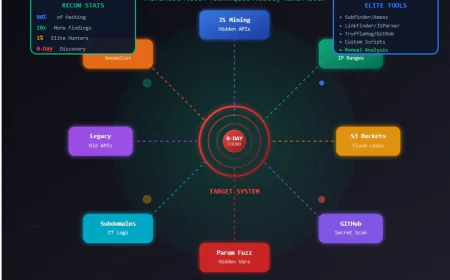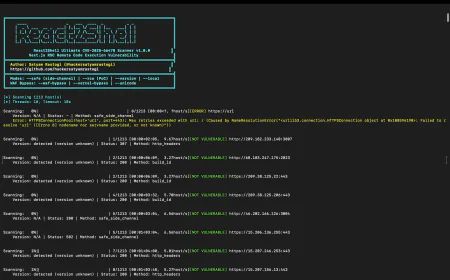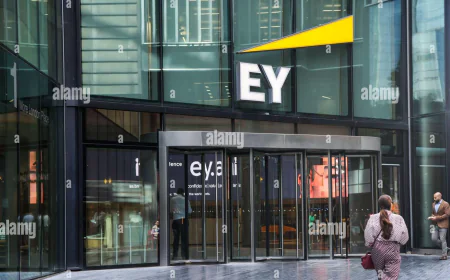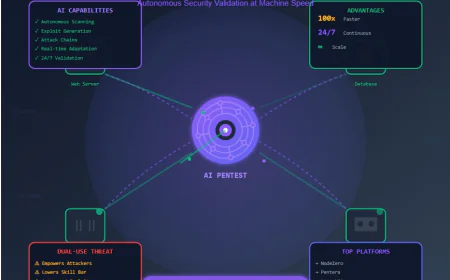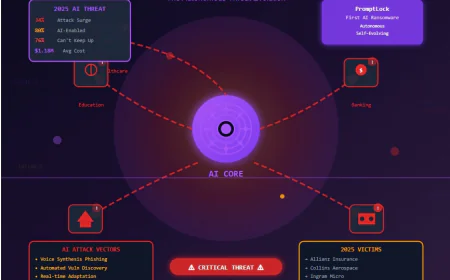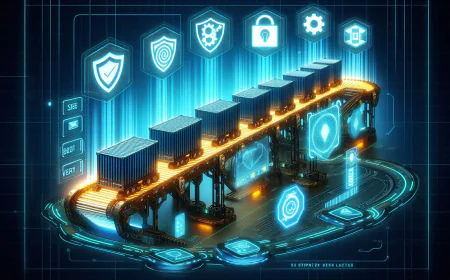Platform Engineering vs DevOps – The Modern Infrastructure Shift
The DevOps revolution is evolving — Platform Engineering is the next frontier. As cloud systems grow more complex, companies are moving from managing pipelines to building internal developer platforms (IDPs) that simplify infrastructure, automate delivery, and empower developers. This blog explores why top enterprises are replacing DevOps teams with Platform Teams, how this shift enhances scalability, and what it means for the future of modern infrastructure.
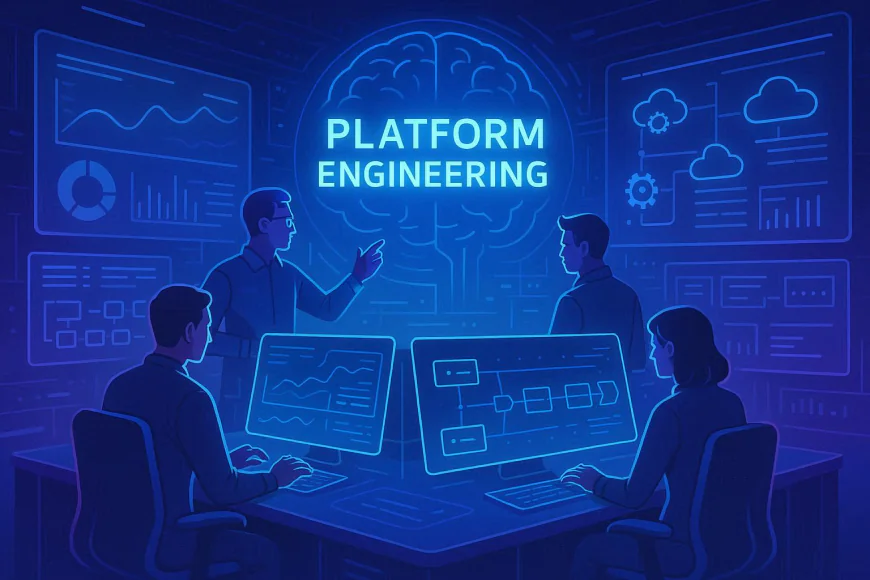
Introduction: From DevOps to Platform Engineering
For years, DevOps has been the driving force behind faster deployments, agile releases, and smoother collaboration between developers and operations. However, as architectures shifted to microservices, Kubernetes, and multi-cloud ecosystems — DevOps teams began to face scalability, complexity, and cognitive overload.
Enter Platform Engineering — the discipline focused on building Internal Developer Platforms (IDPs) that abstract this complexity and provide developers with self-service infrastructure, reusable pipelines, and automated governance.
The goal?
Not to replace DevOps, but to evolve it into something more sustainable, standardized, and scalable.
The Core Difference: DevOps vs Platform Engineering
|
Feature |
DevOps |
Platform Engineering |
|
Focus |
Collaboration between Dev + Ops |
Building internal platforms for developers |
|
Goal |
Speed up deployment cycles |
Enable self-service & scalability |
|
Responsibility |
CI/CD, infra as code, automation |
Platform design, APIs, developer experience |
|
Outcome |
Faster delivery |
Sustainable, secure, scalable systems |
|
Team Users |
Developers & operations jointly |
Developers (as platform consumers) |
In short — DevOps builds pipelines; Platform Engineering builds the tools that build pipelines.
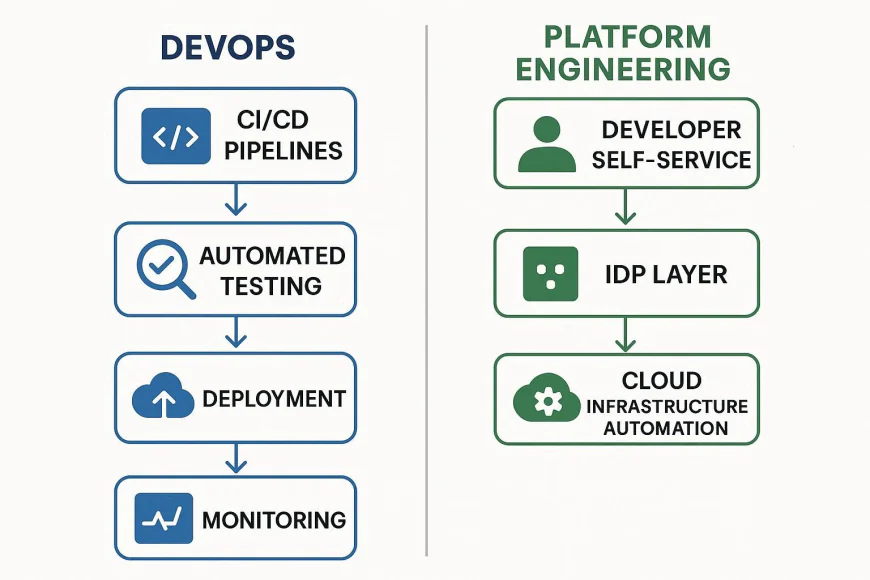
Why Enterprises Are Making the Shift
- Cognitive Overload on Dev Teams
Developers today manage not just code but also YAML files, Kubernetes manifests, Terraform scripts, and security policies. Platform teams take this burden away by packaging these complexities into standardized workflows. - Scalability and Consistency
With dozens of microservices, each team creating its own CI/CD setup leads to chaos. Platform Engineering ensures a unified, version-controlled, and policy-driven foundation across teams. - Security and Compliance by Design
Platform teams integrate policy-as-code, SAST/DAST scans, and secret management directly into the platform, reducing the risk of human error in CI/CD pipelines. - Accelerated Developer Experience (DevEx)
IDPs make developers self-sufficient. Need a new environment? Just one command. Need a deployment? Just push your code — the platform handles the rest.
Architecture: Inside a Typical Platform Engineering Setup

This diagram should depict how the Platform Layer acts as a buffer between the developer and the complex cloud infrastructure.
Key Components of an Internal Developer Platform (IDP):
- Infrastructure as Code (IaC): Terraform, Pulumi, or Crossplane
- CI/CD Orchestration: Jenkins, ArgoCD, GitHub Actions
- Kubernetes Management: Helm, Kustomize, Cluster API
- Security Integrations: OPA (Open Policy Agent), Vault, Kyverno
- Observability: Prometheus, Grafana, OpenTelemetry
- Developer Self-Service Portal: Backstage or Humanitec
Each layer provides automation, guardrails, and standardization, allowing teams to innovate without breaking governance.
Platform Engineering Complements, Not Replaces DevOps
A common misconception is that Platform Engineering “kills” DevOps.
In reality, it amplifies DevOps principles by enforcing automation, feedback, and collaboration — just at a higher level of abstraction.
Think of Platform Engineers as DevOps for DevOps — they build and maintain the reusable systems that DevOps engineers used to create manually.
The Business Impact
- Faster Onboarding: Developers get preconfigured environments instantly.
- Reduced Cloud Costs: Centralized infra management and auto-scaling built into the platform.
- Enhanced Security Posture: Compliance and policy enforcement at every pipeline stage.
- Improved Productivity: Less context switching, more coding.
The Future: Platform Engineering as a Service (PEaaS)
We’re already seeing managed solutions like Humanitec, Qovery, and Port turning the Platform Engineering model into a service.
Soon, instead of hiring separate DevOps teams per product, organizations will run a central platform-as-a-service for all internal teams.
The next evolution?
Integration of AI-powered pipelines and self-healing infrastructure that dynamically adjust cost, security, and performance parameters in real time.
Conclusion
Platform Engineering isn’t replacing DevOps — it’s elevating it.
As cloud complexity continues to grow, organizations must move from “every team builds its own pipeline” to a centralized platform mindset that empowers developers and enforces security and consistency across the board.
The future of infrastructure is not about manual optimization — it’s about building the platform that automates optimization itself.






